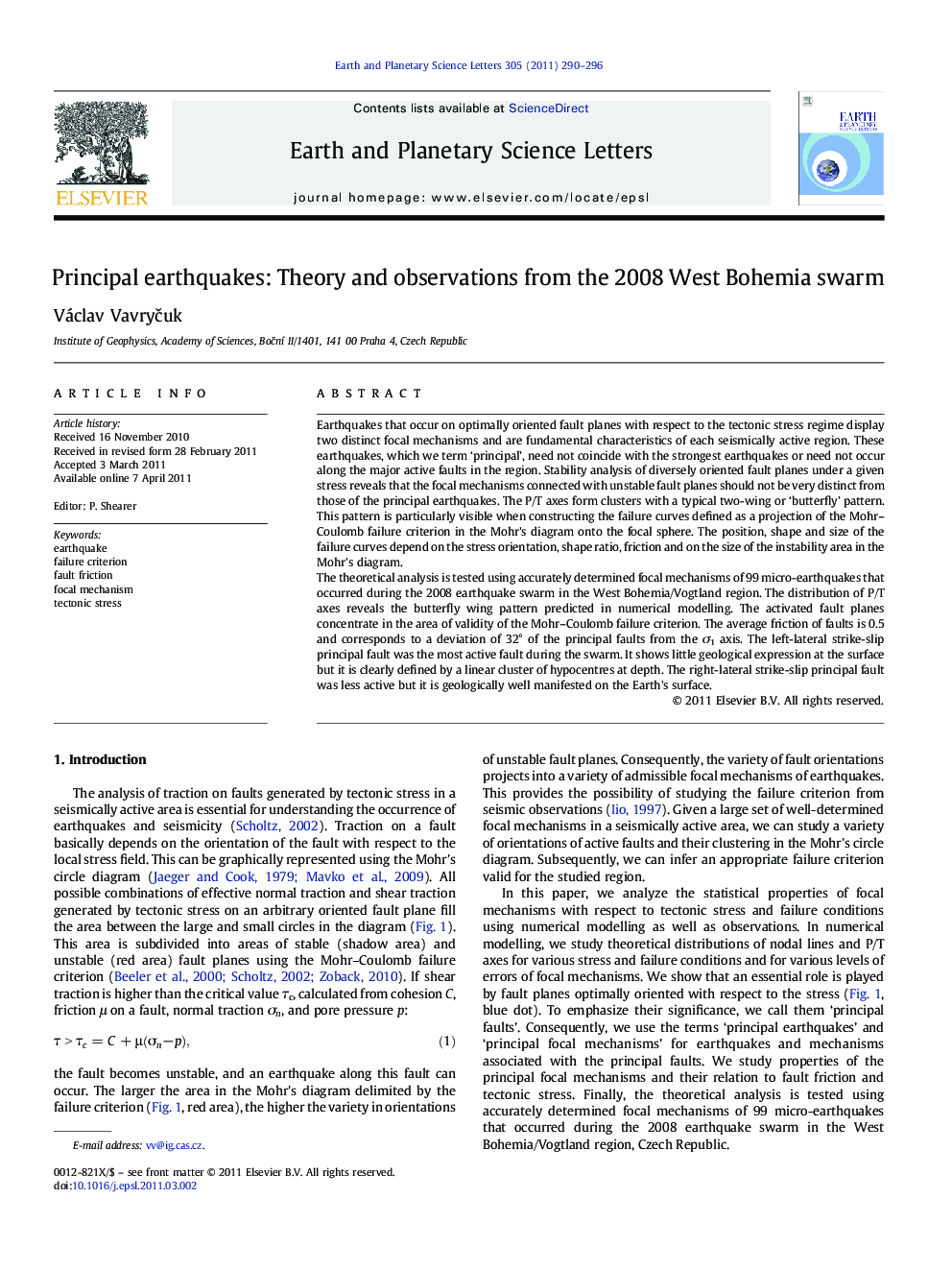| Article ID | Journal | Published Year | Pages | File Type |
|---|---|---|---|---|
| 6430802 | Earth and Planetary Science Letters | 2011 | 7 Pages |
Earthquakes that occur on optimally oriented fault planes with respect to the tectonic stress regime display two distinct focal mechanisms and are fundamental characteristics of each seismically active region. These earthquakes, which we term 'principal', need not coincide with the strongest earthquakes or need not occur along the major active faults in the region. Stability analysis of diversely oriented fault planes under a given stress reveals that the focal mechanisms connected with unstable fault planes should not be very distinct from those of the principal earthquakes. The P/T axes form clusters with a typical two-wing or 'butterfly' pattern. This pattern is particularly visible when constructing the failure curves defined as a projection of the Mohr-Coulomb failure criterion in the Mohr's diagram onto the focal sphere. The position, shape and size of the failure curves depend on the stress orientation, shape ratio, friction and on the size of the instability area in the Mohr's diagram.The theoretical analysis is tested using accurately determined focal mechanisms of 99 micro-earthquakes that occurred during the 2008 earthquake swarm in the West Bohemia/Vogtland region. The distribution of P/T axes reveals the butterfly wing pattern predicted in numerical modelling. The activated fault planes concentrate in the area of validity of the Mohr-Coulomb failure criterion. The average friction of faults is 0.5 and corresponds to a deviation of 32° of the principal faults from the Ï1 axis. The left-lateral strike-slip principal fault was the most active fault during the swarm. It shows little geological expression at the surface but it is clearly defined by a linear cluster of hypocentres at depth. The right-lateral strike-slip principal fault was less active but it is geologically well manifested on the Earth's surface.
Research highlights⺠We present theory of principal earthquakes and apply it to earthquake swarm data. ⺠We analyse distribution of P/T axes of focal mechanisms with respect to stress. ⺠We determine stress and principal focal mechanisms in the West Bohemia region. ⺠The average friction of active faults in West Bohemia is 0.5. ⺠The principal faults deviate from the maximum compression axis by angle of 32°.
